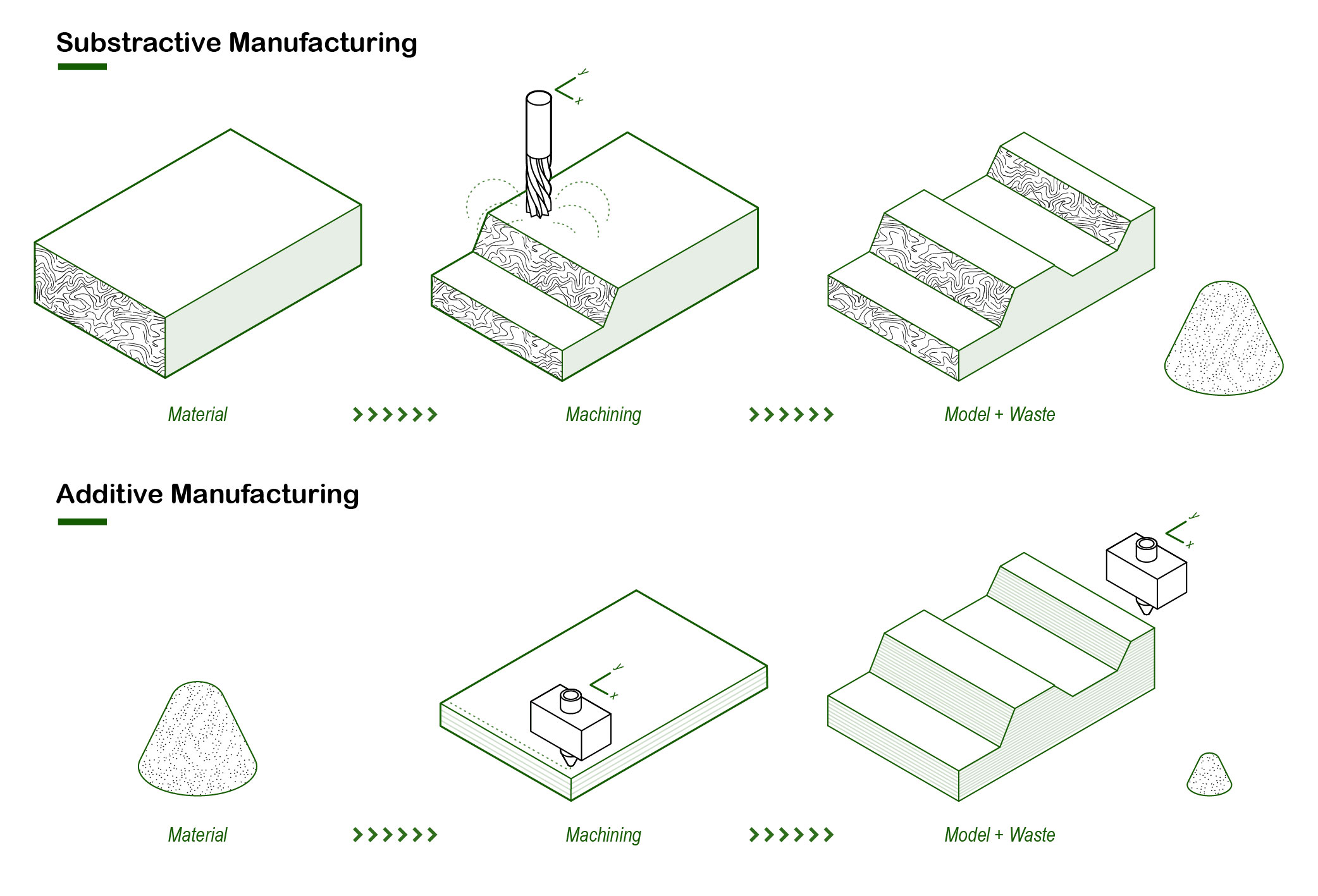Aalto University - ARTS 3D Printing
What is 3D printing?
Definition
3D
printing is a prototyping technology where a digital model is turned into a three-dimensional
object by adding material – generally layer by layer, through a computer-controlled
tool.
3D printing is different from other manufacturing technologies such as CNC machining or mold casting/injection because it neither subtracts material, nor requires building special tools, such as carving tools or molds for machining. Instead, it is possible to build almost any 3D object onto a platform by adding material in layers.

Contrary
to popular belief, 3D printing is not a new technology. It was developed in
1986 by a company called 3D Systems and initially called
Stereolithography (STL) but it remained a very expensive technology, mostly
used in industrial settings. In 2009, the
patent for the technology expired, which led to the birth of low-cost desktop
printers, including the development of open-source printers. During the last 10
years, its popularity has increased greatly due to its affordability,
possibilities of use and constant development.
Characteristics and Use

Using a 3D printer requires the knowledge of computer aided design (CAD modeling) and an understanding of the process in the graphic above. All 3D printers follow this process, but depending on the type of technology used, the way they do it is different: For example, a material extrusion printer (called FDM or FFF printers) uses a plastic filament that is melted through a heated nozzle and deposits it on a platform layer by layer. SLA printers use a laser to harden (cure) thin layers of photo reactive polymer onto a platform.
Today, 3D printing is used in a wide range of applications: from the development of quick prototypes for product design and engineering, to the use in industrial manufacturing of small scale series, sculpture, animation, ceramics, and even fashion.
Although plastic is the most widely used material, at our workshop we can also print with water-soluble polymers like PVA, and clay. In other spaces of the University, It is also possible to print other materials like metal, cellulose, and even food. Depending on the technology and material used, printed parts can also have a wide range of physical properties, like being high-temperature resistant, clear or flexible. In some cases, to achieve a particular surface finish it in necessary to post-process the printed part (sanding, painting, polishing).